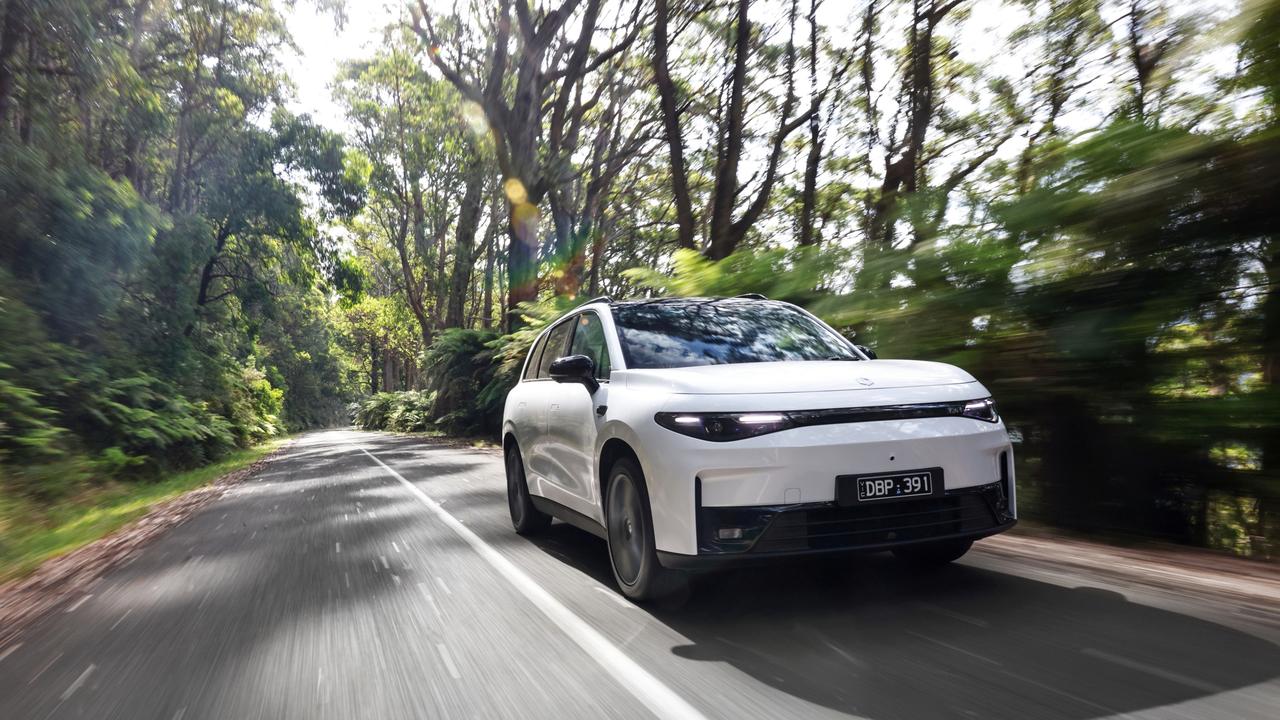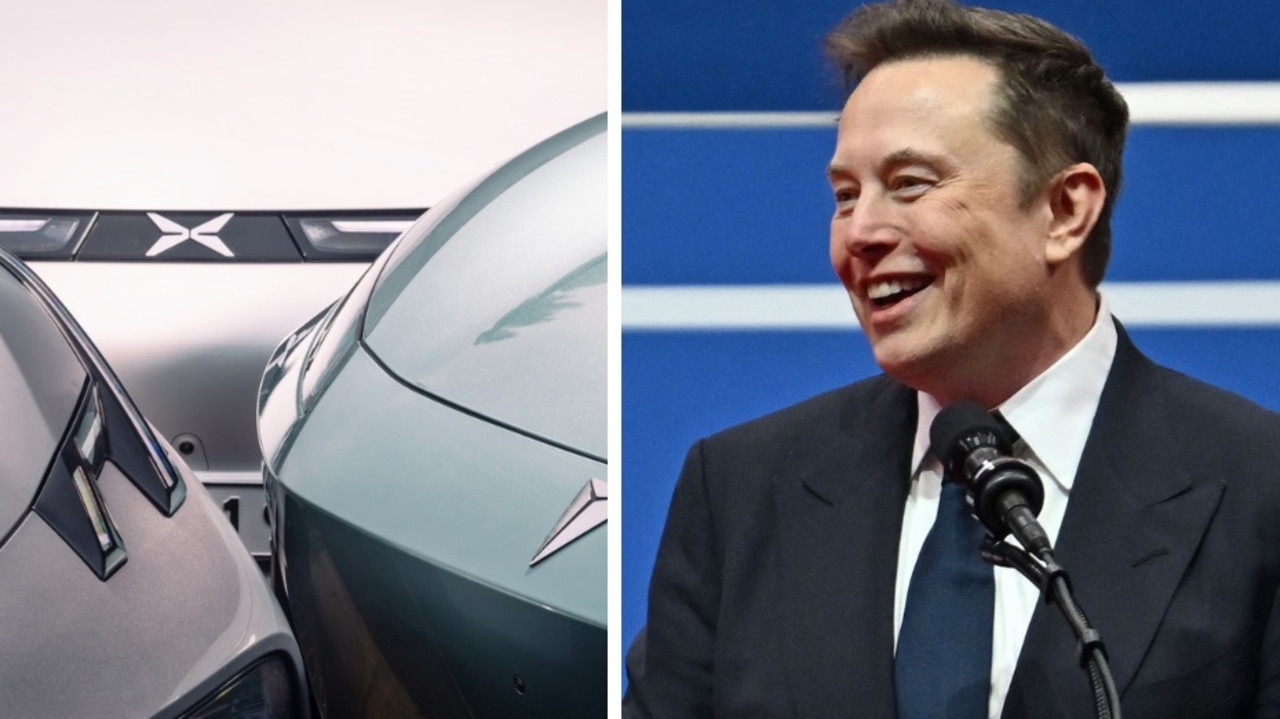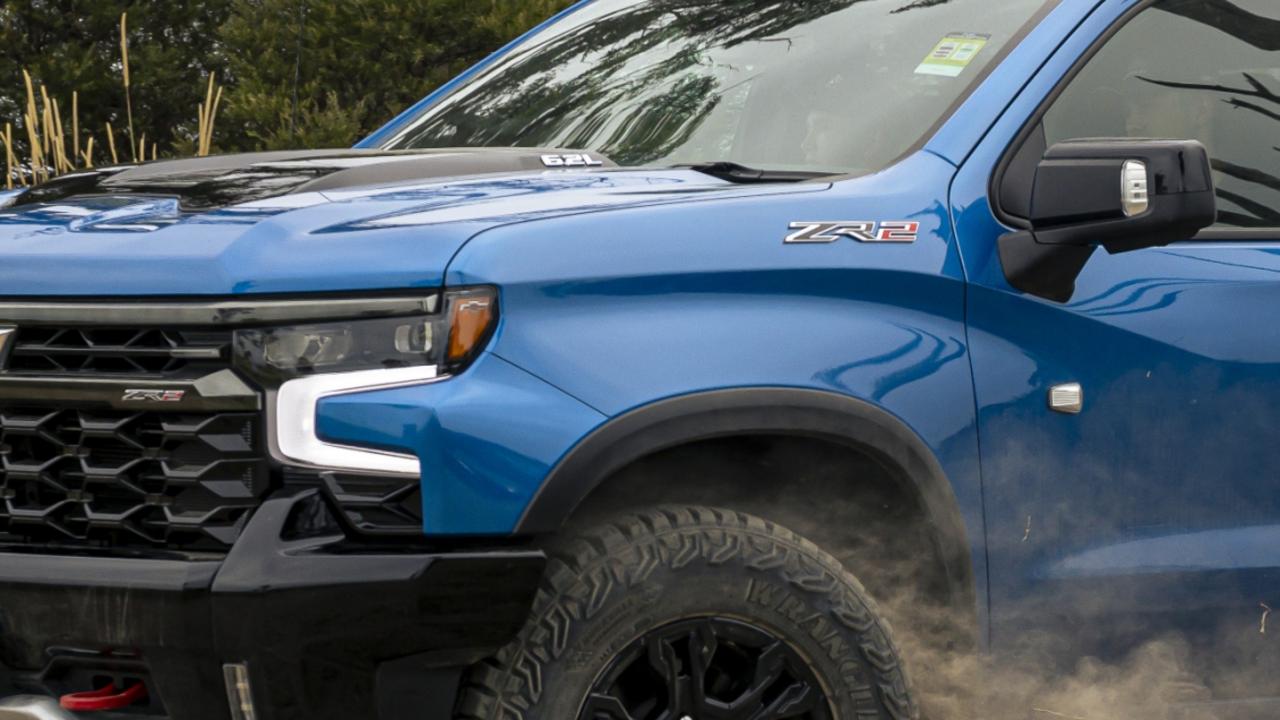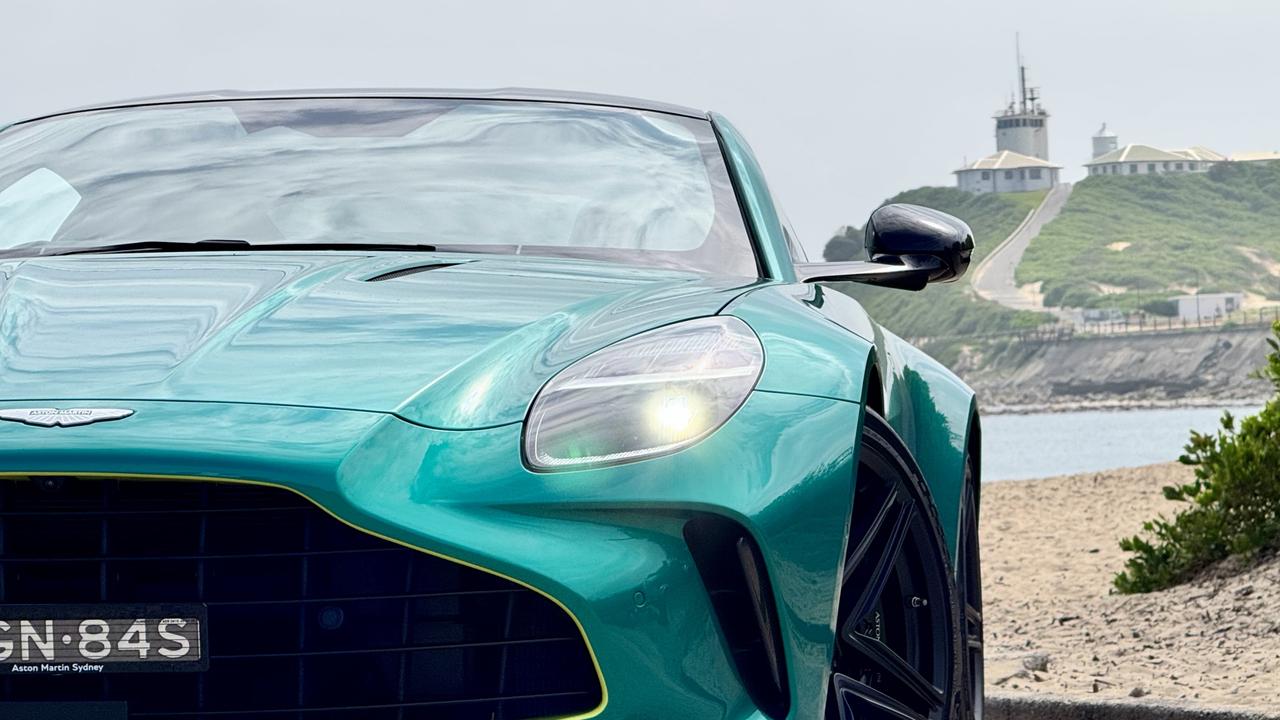2021 Mitsubishi Eclipse Cross PHEV review: Petrol-electric tech fails to cut through
Mitsubishi’s big ticket new family SUV trumps many of its rivals in key areas, but the message isn’t getting through to customers.
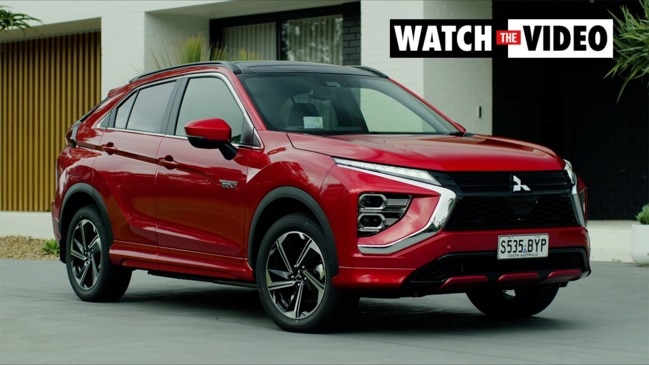
New Cars
Don't miss out on the headlines from New Cars. Followed categories will be added to My News.
The Mitsubishi Eclipse Cross wears the largest “EV” badge on the road.
This is because the brand concedes its plug-in hybrid electric vehicle (PHEV) technology has failed to cut through and match the customer recognition of green rivals Tesla and Toyota.
Original Mitsubishi Outlander PHEVs attracted early adopters but not mum-and-dad motorists, as they were put off by its price and complexity.
Mitsubishi hopes that emphasising the “electric vehicle” element of the Eclipse PHEV will attract more customers.
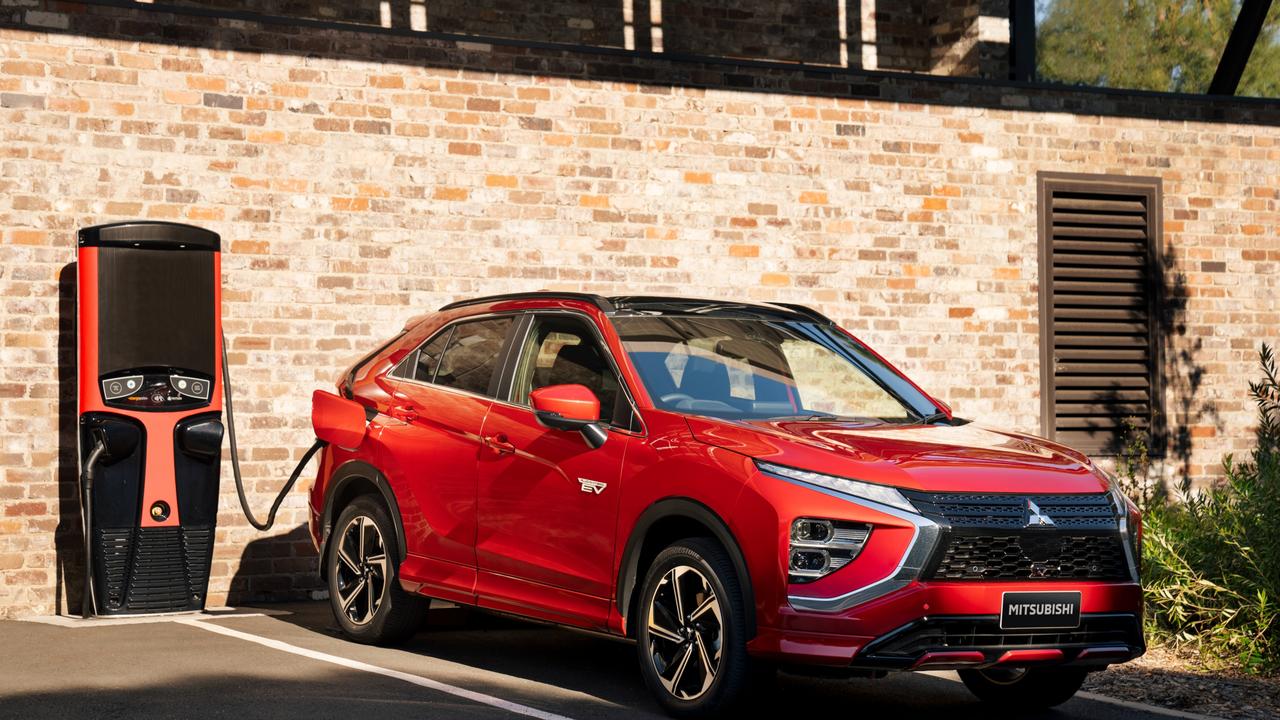
It’s still a complicated and expensive machine, though.
Priced from $46,490 plus on-road costs ($49,990 drive-away) in bare-bones ES trim, it commands an $18,500 premium over the regular petrol Eclipse Cross.
Standard kit includes an 8-inch touchscreen with smartphone mirroring, a reversing camera and digital radio. Safety gear in the cheapest hybrid is basic, amounting to auto emergency braking and lane-departure warning.
You have to buy a more expensive model to get blind-spot monitoring, rear cross-traffic alert and other features found in many new cars for less money.
The range-topping Exceed version we tested is priced from about $60,000 drive-away and has heated leather seats with electric adjustment, twin sunroofs, LED headlights and a head-up display with a digital speedo. In the rear, the seats are heated and there’s a 12-volt power outlet.
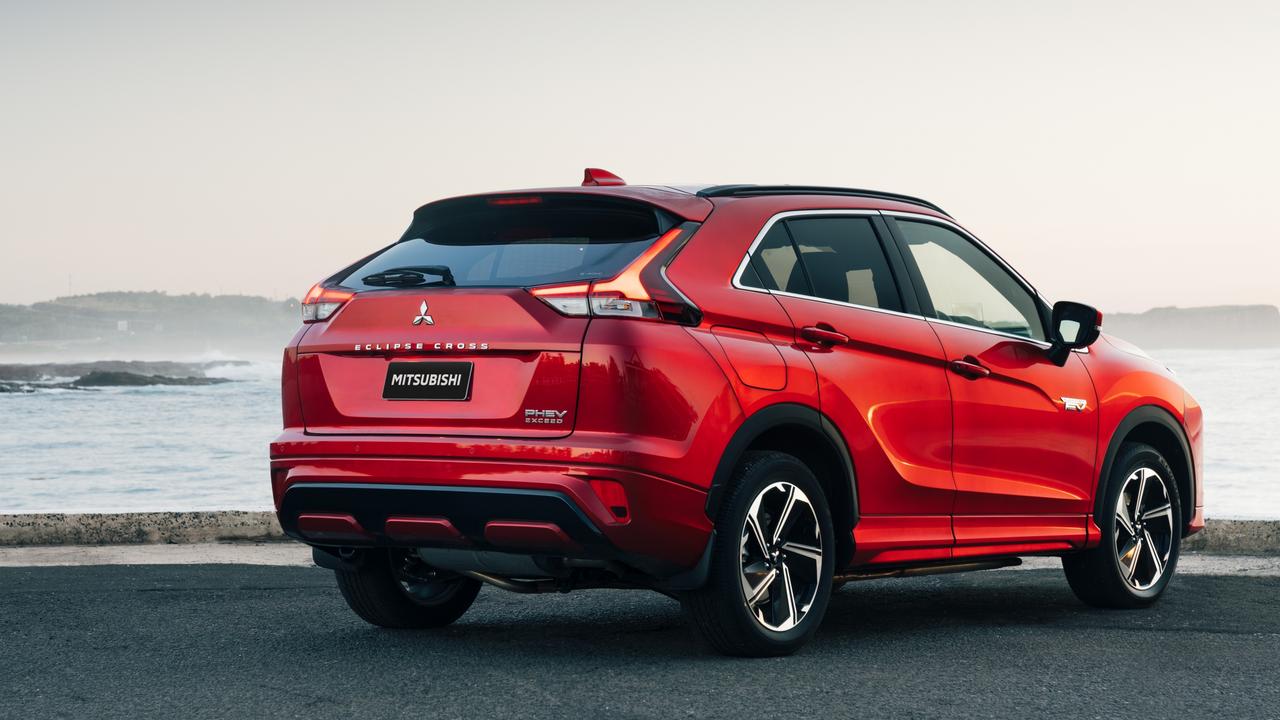
But you won’t find a powered boot, 360-degree camera, digital dash or other modern luxuries. It feels dated compared with the class leaders.
A five-year, unlimited-kilometre warranty is standard and Mitsubishi extends the guarantee to 10 years if the car is serviced with a dealer for an average of $479 per year – $100 per year more than the petrol model.
Other compromises asked of hybrid owners include significantly less cargo room and the omission of a spare wheel.
Boot space is compromised by a 13.8kWh battery much smaller than the 60kWh or so you might find in a pure EV.
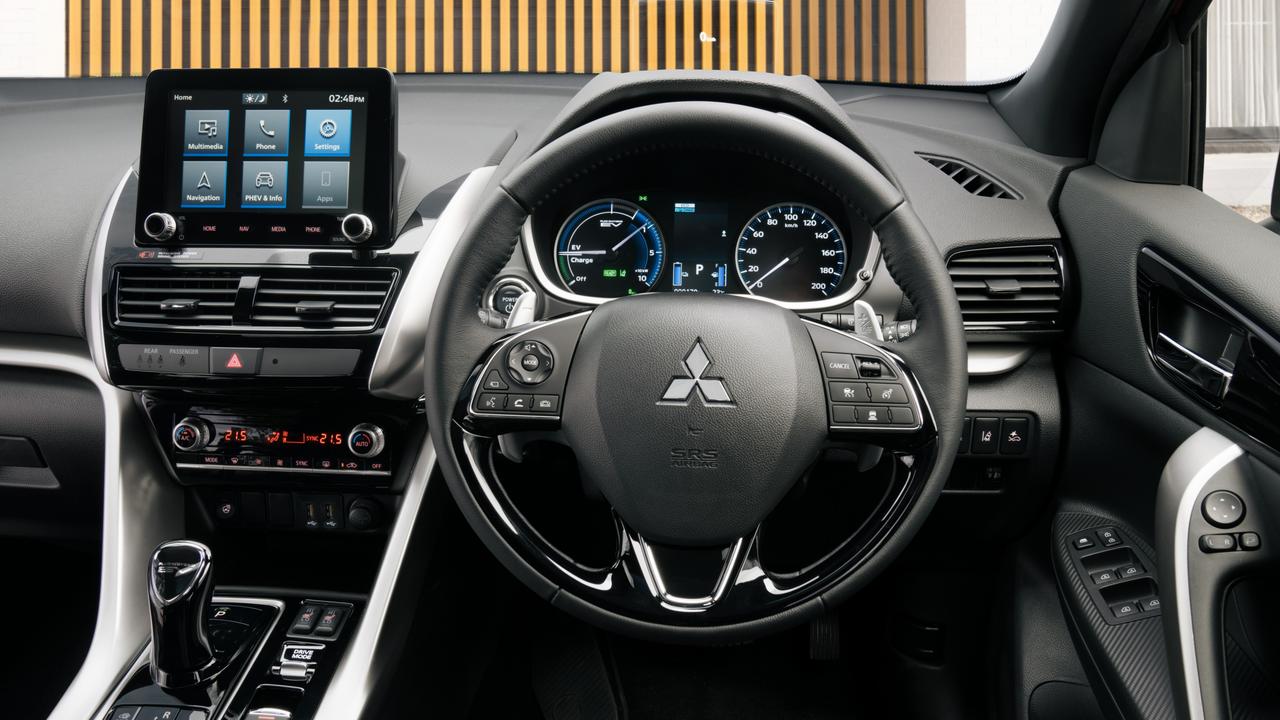
Mitsubishi says the 60kW electric motor in the front and a separate 70kW unit in the rear can power the Eclipse PHEV for more than 50 kilometres of emissions-free motoring. Once that range is exhausted, power comes from a 2.4-litre, 94kW/199Nm petrol engine, while a 45-litre fuel tank adds another 500 kilometres.
The claimed fuel consumption of 1.9L/100km is impressive on paper but doesn’t reflect real-world consumption. If you charge up at home and drive the average daily commute, you might not use any fuel at all. Drive interstate and you’ll use 7L/100km or more.
Our test returned 1.1L/100km consumption for the first 50 kilometres of driving, which became a 4.4L/100km average over 100 kilometres after the battery was spent. A 200-kilometre loop taking in urban areas, suburbs, country roads and motorways resulted in a 5.0L/100km average.
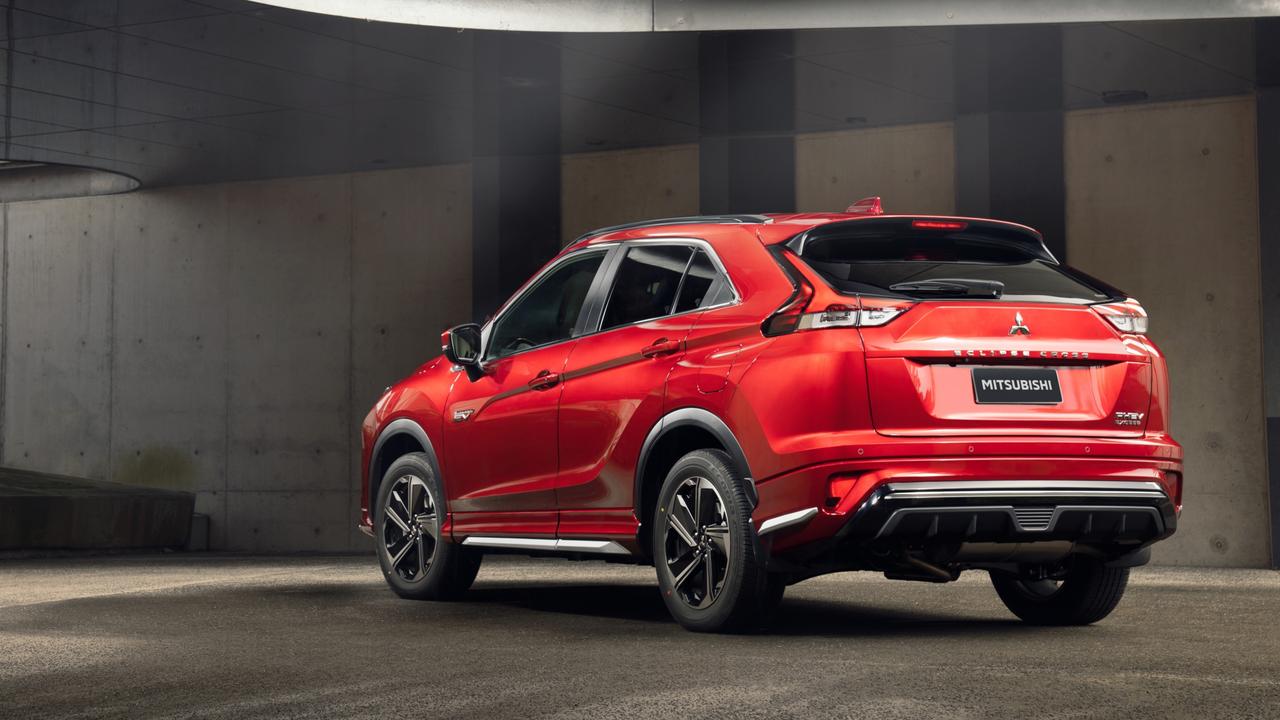
The battery takes seven hours to fully recharge at home, or 25 minutes for an 80 per cent charge at a public fast charger.
Plug-in hybrids respond best to switched-on drivers.
They must be charged regularly and benefit from a hands-on approach to managing energy use on each trip.
The Eclipse Cross has a choice of driving modes including a “charge” setting that burns petrol to top up the battery, and a “save” mode to preserve energy so the car can run emissions-free in built-up areas.
It also has a “Vehicle to Load” ability to power appliances and will ultimately be able to feed power into your house when infrastructure permits.
The catch is that all this technology is complex and heavy, contributing to an underwhelming drive.
It weighs about 500 kilos more than the standard petrol car, which itself is no dynamic benchmark, and the roly-poly suspension lacks precision on winding roads. It slaps on bumps and wallows over crests, while its low rolling resistance tyres are easily overwhelmed.
It also lacks the straight-line acceleration of a pure EV, feeling doughy from rest and laboured at speed.
VERDICT 2.5/5
The Eclipse PHEV will appeal to some with its ability to deliver emissions-free motoring without the range anxiety, but it is expensive, complex and uninspiring to drive.
MITSUBISHI ECLIPSE CROSS PHEV VITALS
Price: From $49,990 drive-away
Motor: 2.4-litre, 94kW/199Nm petrol engine, 60kW and 70kW electric motors
Warranty/Service: 5-year/unlimited km, $1695 for 5 years
Safety: 7 airbags, auto emergency braking, lane-keep assist, forward-collision warning
Thirst: 1.9L/100km
Cargo: 359 litres
Spare: Repair kit
Originally published as 2021 Mitsubishi Eclipse Cross PHEV review: Petrol-electric tech fails to cut through




